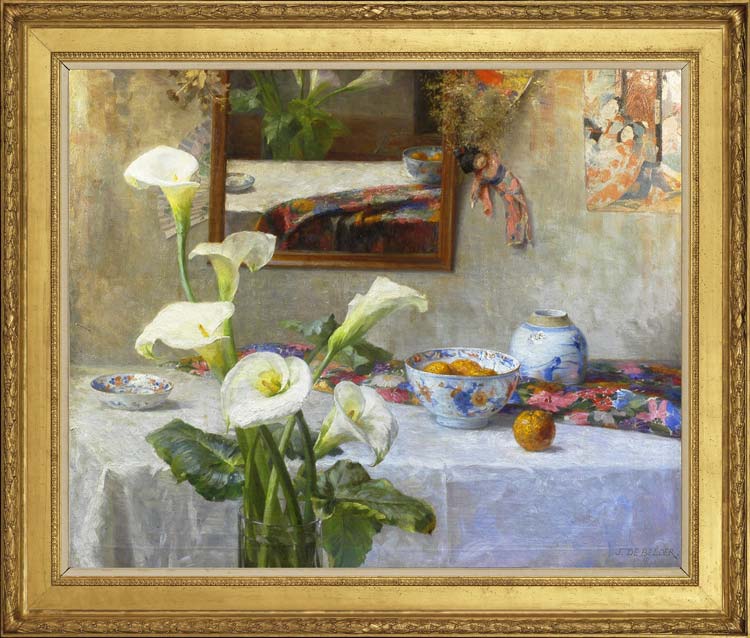As a study of complex spatial relationships, this painting is a tour de force. It may owe something to Whistler’s Harmony in Green and Rose of 1860-61 (exh. 1892, Goupil Gallery, London; sold 1894, Christie’s; exh. Boston 1904 & Paris 1905; now Washington, Freer Gallery of Art), with its arrangement of looking-glass and reflections, picture frames, porcelain and flowered fabrics. This would indicate either that De Belder visited London as a student in 1892 or 1894, or that he was working in or visited Paris in 1905. The objects assembled around the arum lilies are notable for their coherent japonaiserie (the fans, the porcelain, the ginger jar, the doll, the coloured print), whilst elements of the composition (the looking-glass, the frame, the sense of another space within part of the picture, the flowers) recall the more advanced japonisme which influenced composition and space in works by Whistler and Degas. De Belder’s grasp of spatial organizationhis ability to choreograph the elements of the composition from fore- to back- ground and within the reflected room beyond, and are extremely sophisticated, as is his control of colour across the flat surface of the canvas, and have produced a painting remarkable for its harmony.
For further reading on the subject of Japonisme and Japonaiserie, please click here.
Biographical details
Not much is known about Jef De Belder (or Jozef, or Joseph De Belder), save that he was born in Belgium in 1871; he lived in Antwerp, and painted mainly still life compositions – particularly flowers. Work in other genres includes A busy lane in north Africa, Nude before a looking-glass, and A woman driving cattle into a meadow. The title of the Nude… indicates a composition perhaps similar to that of the present Still life with arum lilies, and underlines the possibility that De Belder had seen, in London or Paris, Whistler’s Harmony in Green and Rose: The music room.


